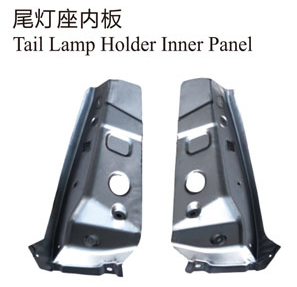First, observe whether the upper and lower gaps of the front and rear vertical seams of the door are even. If the front of the top seam of the door is small and the rear is large, and the front of the bottom seam is large and the rear is small, it means that the door sinks due to the bending of the plate at the door hinge or fixed plate, which can be corrected.

There shall be a gap of 5-6mm between the bottom seam of the door and the lower crossbeam of the door frame, so as to prevent the lower crossbeam of the door frame from being worn due to the sinking of the door caused by deformation and wear during the use. At the same time, the exterior plane of the door and cab door frame shall be adjusted. The front part moves inside and outside through the hinge, and the rear part moves inside and outside through the lock catch to realize the flush of the door and the plane outside the cab. After the door position is determined, adjust the stop to make the core head of the stop and the stop align accurately, mesh well and open and close flexibly. If it is found that the opening and closing are not flexible, add some oil to the ram of the stop for lubrication. If the engagement width is less than 6mm, a base plate can be added under the punch stop core. The thickness of the base plate shall ensure good engagement, and it shall not collide with the cab frame due to the high cushion block.
If the upper and lower seams of the front and rear vertical seams of the door and the cab door frame are the same, and the gap between the top seam and the bottom seam is quite different, it is generally caused by the deformation of the cab. At this time, observe the position of the punch stop in the core. When the core on the door is low and lower than the punch stop, it means that the front corner of the cab sinks, and it must be repaired with a special supporting and pulling tool. If the front end of the bottom gap is small and the rear end is large, it means that the rear corner of the door frame sinks, and the correction method is opposite to the above.
In the assembly process, there are many random problems, so we should find out the specific reasons and then determine the practical methods.
For the local collision, the cab is damaged but does not affect the deformation of the framework, and generally can be corrected by knocking. If necessary, use some special tools, such as crane mouth hammer and special shaped sizing block, etc. If the skeleton has been impacted and deformed, the skeleton correction and the shell correction shall be combined at the same time. If the shell is easy to be removed, it can be corrected separately.
If the cab impact of auto parts is very serious and cannot be corrected directly, it can be partially disassembled for correction.
Open the original welding spot with the electric hand drill or the manual grinding wheel, and then remove the outer layer with the hacksaw or gas cutting. When the deformation range is large, the outer layer can be taken off in pieces and assembled after correction.
Attention shall be paid to the coordination between the components during the correction and leveling, and the shrinkage deformation of the material during the welding, so as to avoid the difficulty in the later assembly.
After the door and cab are repaired respectively, they shall be assembled and debugged.
Assembly quality requirements: when the door is installed on the cab, it shall rotate freely; when the door is closed, there is no feeling of popping; the matching clearance between the door edge and the cab shall be uniform; the door shall be locked flexibly, and the engagement depth of the locking tongue shall meet the design requirements.
Adjustment method: first adjust the distance between the upper and lower door chains to a proper value, and the door can rotate flexibly, then adjust and correct as follows.
Copyright By © Jiangsu Halreal Vehicle Industry Co., Ltd. Powered by Yicheng Network